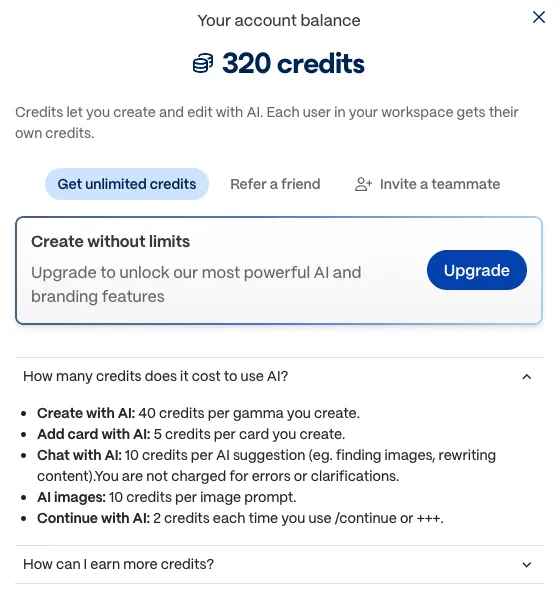- Tactical Tips by DECODE
- Posts
- 🚀 How to increase retention in AI products?
🚀 How to increase retention in AI products?
3 tactics, 2 traps and 1 tool to increase retention in AI products
Hello founders!
Welcome to ‘Tactical Tips’ by Jerel and Shuo at DECODE, where we cover one new idea to help you build and grow your startup – every week in <5 minutes!
Today, we’ll be answering the question: “How to increase retention in AI products?”
And here’s advice inspired by Sandy Diao, DECODE board of advisor and former growth executive at Descript, Meta and Pinterest.
If you are trying to retain your first customers and build for long-term value, today’s newsletter is for you.
🔥 Inside this issue:
✅ 3 tactics to increase retention
✅ 2 traps to avoid
✅ 1 tool to leverage
👇Let’s dive in.
Grab 30 mins with Jerel - Need personalized advice on building your startup or just want to talk? Happy to help and make intros if it’s the right fit.
💌Someone shared this with you? Subscribe here.
LAST CHANCE: Tactical startup advice from OpenAI, Lightspeed, Higgsfield, Spotify and Roblox top execs
Join 200+ founders getting actionable and personalized advice on building startups in the early days at the DECODE Conference on November 15.
💬 Have intimate roundtable discussions with speakers including:
Kevin Weil | Chief Product Officer, OpenAI
Arvind KC | Chief People & Systems Officer, Roblox
Alex Mashrabov | Founder & CEO, Higgsfield AI
Jessica McKellar | Founder & CEO, Pilot
🍽️ Join an invite-only dinner with advisors including:
Keith Enright | Former Chief Privacy Officer, Google
Mark Settle | 7X CIO (including Okta)
Esther Wojcicki | ‘Godmother of Silicon Valley’
Tony Jebara | Former VP of Engineering, Head of AI/ML, Spotify
💻 Demo your product to investors including:
Barry Eggers | Founding Partner, Lightspeed Venture Partners
David Jen | MD of Finance at X, Alphabet's Moonshot Factory
Hamet Watt | Founder & CEO, Share Ventures
Nicole Baer | Chief Marketing Officer, Carta; Limited Partner, GTMfund
Past attendees have successfully raised pre-seed to series A rounds from investors they met through DECODE, including a16z, Sequoia and Y Combinator, as well as found advisors and team members to help 10x their growth.
Sign up now using promo code: DECODE for 30% off.
“Reply” to this newsletter if cost is a barrier.
3 tactics to increase retention
🤔 Qualify intent early
Filter for high-intent users early instead of waiting for churn signals
Every AI output costs money, and the wrong users burn resources without converting
Ensure users have clear intent by adding purposeful friction:
Introduce upgrade prompts from the beginning and gate advanced features, to make sure the people using the product have clear intent.
Use opt-in reverse trials by showing the premium experience first, then pull it back unless they upgrade
Start with credit card trials to filter out casual interest
Default to annual plans instead of easy monthly churn
Capture intent while it’s hot because AI curiosity fades quickly; the moment users express interest is your best shot at converting them for the long-term
💡 Make value obvious
Pair friction with clear demonstrations of value:
Reflect consumption on the side bar
Display the user’s current plan type in the top navigation and make it easy to consult the different plan types with in-product pricing pages
Highlight what the user has access to vs. what they’re missing out on
Provide real-time notifications (whether in product or via email) that informs users what they’ve used, what’s still available, and what an upgrade would unlock for them
When value is visible, conversion is a lot more straightforward

🔄 Rethink activation around return behavior
Focus on tracking the metric: AI activation rate = [X] AI outputs in [Y] days (e.g. for Canva AI, it might be “3+ AI images generated within 7 days”
Single outputs signal curiosity; outputs over time signal habit
Uncover what drives return behavior by tracking:
Pre-signup intent: What surfaces or use cases brought in users? These are early signals of what users expect from the product.
Signup intent: Users often describe what they want in natural language. You can run both qualitative and quantitative analysis on this to uncover the user’s true goals and segment them based on intent.
Early output generation: How quickly are users generating their first outputs? The best products deliver value in seconds or minutes, and that first successful output is a strong signal they’ll come back for more.
Habit loops that generate repeated value are the new best indicator for long-term retention
Define these habit loops explicitly and build lifecycle nudges around them
Build for magical moments early and drive product engagement from the beginning with timely notifications, contextual product nudges, or emails
2 traps to avoid
🚨 Building for AI tourists instead of real users
“Come for X, stay for Y” (Enter the product with a specific job-to-be-done and discover new features that retain them) attracts low-intent users (those driven by FOMO or those exploring the dozens of AI tools available)
Frictionless experience (e.g. zero-friction trials) attract curiosity, not commitment
Low intent + zero switching costs = users using up all the credits and then switching to a competitor
🚨 Thinking of activation as the goal
AI products often show value immediately (e.g. a user writes a prompt, gets an output, and feels like they’ve experienced the product’s value in <1 minute)
Activation happens fast and product engagement-based activation metrics may no longer predict retention
Think about lifecycle strategy from day one (once the initial value is delivered, what brings the user back?)
1 tool to leverage
📖 Best practice on retention
For companies <$1M ARR: aim to achieve Gross Revenue Retention of 100% and Net Revenue retention at 116%;
For companies $1M-5M ARR: aim to achieve Gross Revenue Retention of 95% and Net Revenue retention at 110%
See 2025 SaaS benchmarks Report by High Alpha for more metrics, benchmarks and trends
Bonus: 1 trend to spark startup ideas
📈 Compliance is construction’s next data problem
Compliance in AEC spans building codes, safety, labor, environmental stewardship, and audit documentation; each with exploding data requirements
The average AEC engineering firm’s data footprint has grown by more than 800% since 2018, but audit trail often collapses between handoffs and 52% of rework is caused by poor project data and miscommunication
Risk creeps in at every stage:
During pre-construction, teams verify permits, zoning approvals, and environmental impact assessments
During construction, they track site inspections, worker certifications, equipment maintenance, and safety audits
Post-construction brings warranty obligations, environmental monitoring, and ongoing reporting requirements
Only 16% of firms have fully integrated systems; most workflows remain manual and siloed
AI can turn compliance from a reactive audit into a proactive signal; specialized models can:
Verify documentation formats and flag inconsistencies in real time
Predict expiring certificates and missing inspections
Detect subcontractors with patterns of incomplete or outdated compliance
Surface anomalies across portfolios before they cascade into delays
Continue learning
Upcoming opportunities
Featured Founders’ FREE professional headshot and female founder feature
Berkeley SkyDeck’s Virtual Spring Intern Fair 2026 on Friday, November 14th between 8:45am-12pm PT
Other resources
Founders’ Prompt Library to enhance your efficiency (Free)
Apply to participate in Founders Pop-up Board Advisory and receive startup feedback from execs at Microsoft, Google, Meta, Reddit (Free)
Schedule for a consultation on structuring your equity-based compensation plan (Free).
Fill this form and we’ll get in touch for details on how we can get your brand in front of our community.
Still figuring out your startup idea?Take our free course ― Zero to Startup: How to Identify a Winning Idea Fast, where you’ll receive 1 email per day over 5 days to help you get started! |
What did you think of today's content?Your feedback helps us improve. |
Please complete this 2-min survey to help us get to know you and better tailor content for you.
“Reply” with any follow-up questions you might have, and we’ll work on covering them in a future newsletter!
Stay tuned for more startup wisdom in next week’s edition!
